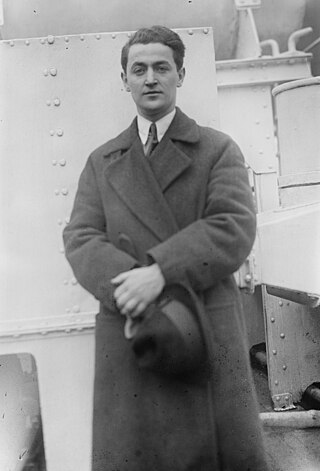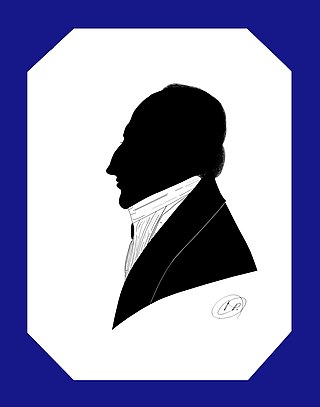Related Research Articles

George Balanchine was a Georgian American ballet choreographer, recognized as one of the most influential choreographers of the 20th-century. Styled as the father of American ballet, he co-founded the New York City Ballet and remained its artistic director for more than 35 years. His choreography is characterized by plotless ballets with minimal costume and décor, performed to classical and neoclassical music.
An eclogue is a poem in a classical style on a pastoral subject. Poems in the genre are sometimes also called bucolics.

Pulcinella is a 21-section ballet by Igor Stravinsky with arias for soprano, tenor and bass vocal soloists, and two sung trios. It is based on the 18th-century play Quatre Polichinelles semblables, or Four similar Pulcinellas, revolving around a stock character from commedia dell'arte. The work premiered at the Paris Opera on 15 May 1920 under the baton of Ernest Ansermet. The central dancer, Léonide Massine, created both the libretto and the choreography, while Pablo Picasso designed the costumes and sets. The ballet was commissioned by Sergei Diaghilev, impresario of the Ballets Russes. A complete performance takes 35–40 minutes. Stravinsky revised the score in 1965.
Le Baiser de la fée is a neoclassical ballet in one act and four scenes composed by Igor Stravinsky in 1928 and revised in 1950 for George Balanchine and the New York City Ballet. Based on Hans Christian Andersen's short story Isjomfruen, the work is an homage to Pyotr Ilyich Tchaikovsky, for the 35th anniversary of the composer's death. Stravinsky elaborated several melodies from early piano pieces and songs by Tchaikovsky in his score. A commission by Ida Rubinstein from 1927, the ballet was choreographed by Bronislava Nijinska and premiered in Paris on 27 November 1928.

Igor Stravinsky's Violin Concerto in D is a neoclassical violin concerto in four movements, composed in the summer of 1931 and premiered on October 23, 1931. It lasts approximately twenty minutes.

Apollo is a neoclassical ballet in two tableaux composed between 1927 and 1928 by Igor Stravinsky. It was choreographed in 1928 by twenty-four-year-old George Balanchine, with the composer contributing the libretto. The scenery and costumes were designed by André Bauchant, with new costumes by Coco Chanel in 1929. The scenery was executed by Alexander Shervashidze, with costumes under the direction of Mme. A. Youkine. The American patron of the arts Elizabeth Sprague Coolidge had commissioned the ballet in 1927 for a festival of contemporary music to be held the following year at the Library of Congress in Washington, D.C.
Pastorale is a song without words written by Igor Stravinsky in 1907. Stravinsky composed the piece at his family's estate in Ustilug, Ukraine, while under the supervision of Nikolai Rimsky-Korsakov, and dedicated it to Rimsky-Korsakov's daughter Nadia.
Chant du Rossignol, as it was published in 1921, is a poème symphonique by Igor Stravinsky adapted in 1917 from his 1914 opera The Nightingale.
Yvonne Borree is a former principal dancer at New York City Ballet. She was raised in Norfolk, Virginia, where she began her dance studies with the Tidewater Ballet Association at four years of age.

Kay Mazzo is an American former ballet dancer and educator. In 1961, she joined Jerome Robbins' company, Ballets USA. The following year, she joined the New York City Ballet and was promoted to principal dancer in 1969. She created roles for George Balanchine and Robbins, before retiring from performing in 1981. She then joined the permanent faculty of the School of American Ballet in 1983, named co-chairman of faculty in 1997 and chair of faculty in 2018. She stepped down from the position in June 2022, but continues to teach.

Samuel Dushkin was an American violinist, composer, and pedagogue of Polish birth and Jewish origin.
This is a listing of all of Igor Stravinsky's commercially released studio recordings as a conductor or as a pianist; it also includes recordings conducted by Robert Craft "under the supervision of the composer." Works are arranged in chronological order by date of composition.
Tango is a 1940 piece originally composed for piano by Russian composer Igor Stravinsky. It is one of Stravinsky's most recorded works for piano.

Federigo Fiorillo was a mandolinist and composer, who wrote thirty-six caprices for violin, also called études.
Sergei Prokofiev composed his Sonata for Two Violins in C major, Op. 56, in 1932 during his vacation near St. Tropez as a commission piece to conclude the inaugural concert of Triton, a Paris-based society dedicated to presenting new chamber music. That concert was held on 16 December 1932.

Bluebird Pas de Deux is a 1941 arrangement for chamber orchestra of a short section of Pyotr Ilyich Tchaikovsky's The Sleeping Beauty composed by Igor Stravinsky. It was used in Lucia Chase's Bluebird ballet.
Stravinsky Violin Concerto, originally titled Violin Concerto, is a neoclassical ballet choreographed by George Balanchine to Stravinsky's Violin Concerto. Balanchine had previously choreographed another ballet to the concerto in 1941 for the Original Ballet Russe, titled Balustrade, though it was not revived following a few performances. He then reused the concerto for New York City Ballet's Stravinsky Festival in 1972, a tribute to the composer following his death. The ballet premiered on June 18, 1972, at the New York State Theater.
Duo Concertant is a ballet choreographed by George Balanchine to Stravinsky's score of the same name. The ballet was created for New York City Ballet's Stravinsky Festival, a tribute to the composer a year after his death, and premiered on June 22, 1972, at the New York State Theater, danced by Kay Mazzo and Peter Martins.
References
- ↑ "Duo Concertant". The George Balanchine Trust.